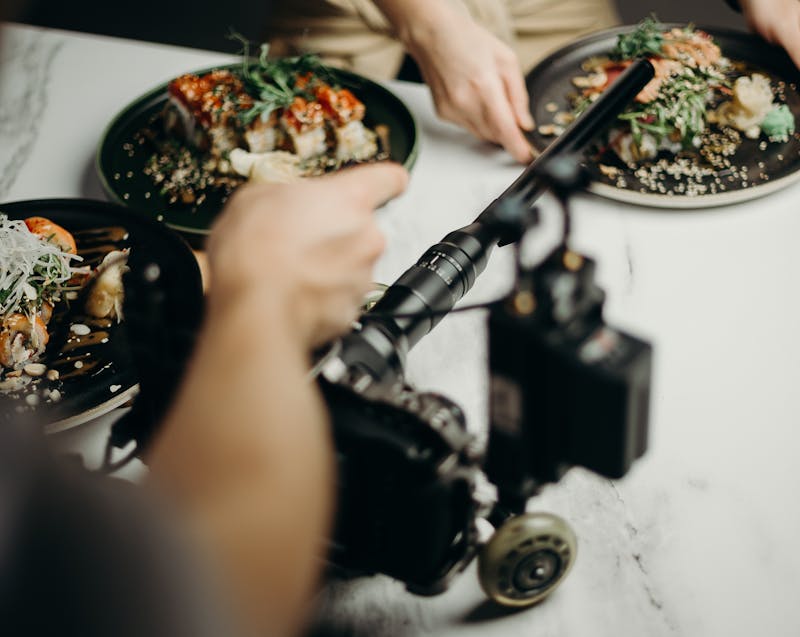

Running a restaurant today is about more than just offering great food and friendly service. In today’s highly competitive dining scene, visibility is everything. Diners increasingly rely on Google searches, Instagram posts, online reviews, and food delivery apps to decide where to eat. If your restaurant isn’t easily found online, chances are your competitors are winning those customers instead.
The good news is that you don’t need an enormous budget to market your restaurant effectively online. With the right mix of digital tools—such as Google Business Profile, local SEO strategies, social media platforms, and influencer partnerships—you can reach more people, build stronger brand awareness, and keep tables full week after week.
This guide dives deep into practical and proven ways to increase your restaurant’s online visibility and attract more diners.
Why Online Marketing Matters for Restaurants Today
In the past, word of mouth and a prime location could be enough to keep a restaurant thriving. But the digital landscape has changed everything. In 2025, the majority of diners search online before making a decision. Whether they’re looking for “best pizza near me” or “vegan cafés in Melbourne,” the internet is where people go first.
For restaurant owners, this means online visibility directly impacts foot traffic and revenue. An active online presence also helps build trust. A customer who sees positive reviews, vibrant Instagram photos, and an up-to-date Google Business Profile is more likely to choose you over a competitor with little to no online activity.
Digital marketing is not just an add-on; it’s an essential part of your growth strategy. If you want to future-proof your restaurant, you need to master online marketing.
How Google Business Profile Helps Diners Find You
Google is often the first stop for hungry customers. When people search for restaurants, they usually see a map pack (the local listings that appear above standard search results). To appear there, your restaurant needs a fully optimised Google Business Profile (GBP).
Your GBP acts as your restaurant’s digital storefront. It showcases your business name, location, hours, photos, reviews, and menu links—all the essentials a diner needs to decide whether to visit you. Restaurants with updated profiles are more likely to appear in Google Maps searches, especially when users type “near me” queries.
To optimise your Google Business Profile:
- Ensure your name, address, and phone number are correct and consistent across all platforms.
- Upload high-quality photos of your food, interior, and staff.
- Regularly update your hours and holiday schedules.
- Post updates about events, menu changes, or special offers.
- Encourage satisfied customers to leave reviews, and respond to them professionally.
When done right, GBP can be the single most effective online marketing tool for restaurants.
Harnessing the Power of Local SEO
Local search engine optimisation (SEO) helps your restaurant appear in organic search results when diners are looking for nearby options. It’s about making your website and online listings more visible for local searches like “Thai restaurant in Sydney CBD” or “family-friendly cafés in Brisbane.”
Key strategies for local SEO include:
- Keyword optimisation: Add location-specific keywords to your website’s content, headings, and metadata.
- NAP consistency: Keep your business name, address, and phone number identical across directories and platforms.
- Mobile optimisation: Ensure your website is mobile-friendly since most searches are made on phones.
- Local backlinks: Collaborate with local food bloggers or directories to earn links to your website.
- Schema markup: Add structured data to your website to improve how your business appears in search results.
By prioritising local SEO, you’re making sure that when someone nearby searches for your cuisine, your restaurant appears at the top of their options list.
Social Media Marketing: Reaching Diners Where They Spend Time
Social media has become one of the most influential tools in restaurant marketing. Platforms like Instagram, Facebook, and TikTok are visual-first spaces where food content thrives. People love sharing dining experiences online, and this behaviour can be harnessed to boost visibility.
For restaurant owners, Instagram is particularly powerful. Posting high-quality food photography, behind-the-scenes videos, and customer experiences helps build excitement around your brand. Use features like Stories and Reels to highlight daily specials, chef spotlights, or customer shoutouts.
Facebook is excellent for community-building. You can share updates, run targeted ads, and create event pages for live music nights, tasting menus, or special holidays. TikTok, meanwhile, is perfect for showcasing short, creative videos that can go viral and drive significant attention to your restaurant.
Consistency is key. Aim to post regularly, engage with followers, and use relevant hashtags like #SydneyEats or #MelbourneFoodie to increase your reach.
Partnering with Food Influencers to Boost Reach
Food influencers have built loyal audiences who trust their dining recommendations. Partnering with them can expose your restaurant to thousands of potential diners who may not have heard of you otherwise.
The key is finding the right influencer. Look for those who align with your restaurant’s cuisine, values, and target market. For example, a vegan influencer in Melbourne might be a perfect match for a plant-based café, while a family lifestyle blogger could promote a child-friendly restaurant.
Ways to collaborate include:
- Hosting influencers for a complimentary meal in exchange for honest coverage.
- Running joint giveaways on social media.
- Creating exclusive menu items with influencer input.
- Using influencer content in your own marketing with permission.
Influencer partnerships can be especially effective for launching new restaurants or introducing seasonal menus.
Encouraging User-Generated Content (UGC)
User-generated content is any photo, video, or post that your customers create about your restaurant. UGC acts as authentic marketing because it’s created by real diners who enjoyed your food.
To encourage UGC:
- Create Instagram-worthy dishes and plating that diners will want to photograph.
- Set up branded hashtags for customers to use.
- Run contests where diners share photos for a chance to win free meals.
- Repost customer content on your official social media channels.
UGC is cost-effective and builds community. It transforms your diners into brand ambassadors who spread the word for you.
Paid Advertising for Fast Results
While organic strategies take time, paid ads can give your restaurant immediate visibility. Platforms like Google Ads and Facebook Ads allow precise targeting so you can reach people in your area who are actively looking for dining options.
For restaurants, the most effective paid campaigns often include:
- Google Local Search Ads: Appear at the top when people search for restaurants near them.
- Facebook/Instagram Ads: Target based on location, age, interests, and dining preferences.
- Seasonal promotions: Boost ads during holidays or local events to drive more bookings.
Paid advertising works best when combined with strong organic marketing, creating a balanced strategy.
Email Marketing: Staying Connected with Diners
Email may seem old-fashioned compared to social media, but it remains one of the most effective tools for customer retention. By collecting diner emails (through loyalty programs, booking systems, or website sign-ups), you can stay connected with your audience.
Email marketing ideas for restaurants:
- Send weekly updates about specials and new menu items.
- Share exclusive offers for loyal customers.
- Promote events like wine tastings or live music nights.
- Celebrate milestones with personalised offers, such as birthday discounts.
Regular, well-crafted emails keep your restaurant top of mind, encouraging repeat visits.
How to Market Your Restaurant Online with Customer Reviews
Customer reviews have become the new word of mouth. In fact, many people trust online reviews as much as personal recommendations. Positive reviews not only boost credibility but also improve your ranking in Google search results.
To leverage reviews:
- Actively encourage happy customers to leave reviews on Google, Facebook, and TripAdvisor.
- Respond to all reviews, both positive and negative, with professionalism and gratitude.
- Showcase glowing reviews on your website and social media.
- Train your staff to provide excellent service, as this often leads directly to positive feedback.
Even negative reviews can be turned into opportunities. A thoughtful response that addresses concerns shows potential customers that you value feedback and are committed to improvement.
Measuring Your Online Marketing Success
Marketing without measurement is like cooking without tasting. To ensure your strategies are working, you need to track results.
Key metrics to monitor:
- Website traffic and search rankings (via Google Analytics).
- Engagement on social media (likes, shares, comments).
- Number and quality of online reviews.
- ROI from paid ads (conversions and bookings).
- Repeat visits from email campaigns.
Regularly reviewing these metrics helps you refine your strategy and focus on what’s driving real results.
Bringing It All Together: A Strategic Approach
Marketing your restaurant online is not about using one single platform—it’s about creating a cohesive strategy where each element supports the other. Your Google Business Profile attracts search traffic, social media builds relationships, reviews and influencers enhance credibility, and paid ads provide immediate boosts.
The key to success is consistency. A neglected profile or irregular posting schedule can harm your visibility, while consistent engagement builds trust and momentum over time.
If you’re serious about attracting more diners in today’s competitive food market, now is the time to invest in a smart, well-rounded digital marketing plan.
Conclusion
Online marketing has levelled the playing field for restaurants of all sizes. Whether you’re running a small suburban café or a high-end fine dining establishment, your ability to attract diners increasingly depends on your digital presence.
From optimising your Google Business Profile to leveraging social media, local SEO, customer reviews, and influencer partnerships, there are countless ways to increase visibility. By embracing these strategies, you’ll not only attract more first-time diners but also build a loyal community of repeat customers.
Your food might get people in the door once, but your online marketing ensures they find you in the first place.



